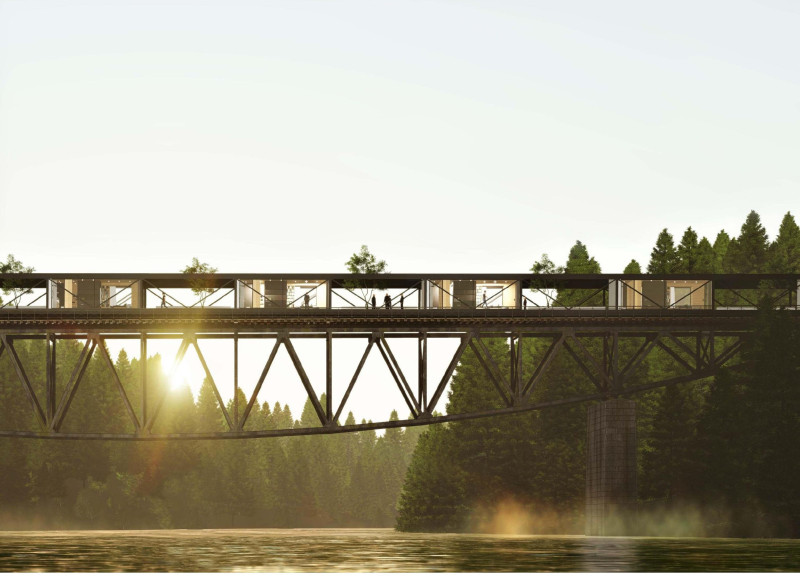5 key facts about this project
The Mission Possible project in Pilchowice is an example of micro-housing situated on an unused bridge. The project consists of seven micro-houses, each covering an area of 25 m². The design focuses on modularity and connectivity, aiming to create a living space that integrates well with its surroundings while meeting modern housing needs.
Modular Design
The layout incorporates two repeatable modules that serve as the basis of the micro-houses. This approach allows for flexible arrangements and efficient construction. A common pathway connects the buildings, promoting interaction among residents. This design fosters a sense of community while ensuring easy access to shared spaces.
Sustainable Solutions
Sustainability is a core aspect of the design. Each micro-house features solar panels that provide energy. Water management includes a container on the roof equipped with a filtration system for clean drinking water. A grey water system redirects sewage to a biological treatment plant, highlighting a thoughtful approach to environmental impacts.
Thermal and Acoustic Comfort
The design aims to provide thermal and acoustic comfort for the residents. The use of wooden structures enhances insulation, while walls made of straw and clay help to regulate humidity levels. This balance contributes to a healthier living environment while reducing the likelihood of mold and fungi, common challenges in small living spaces.
Visual Integration
The orientation of the micro-houses is carefully planned to maximize natural light and improve visual comfort. The surrounding nature plays a key role in maintaining good air quality, contributing to overall livability. Each micro-house features accessible gardens that blend communal and private areas, creating spaces for relaxation and social interaction.
The design emphasizes functionality and simplicity, making daily living both practical and enjoyable. Easy mobility and social spaces enhance the overall experience for residents, allowing them to connect with each other and with their environment without barriers.


















































